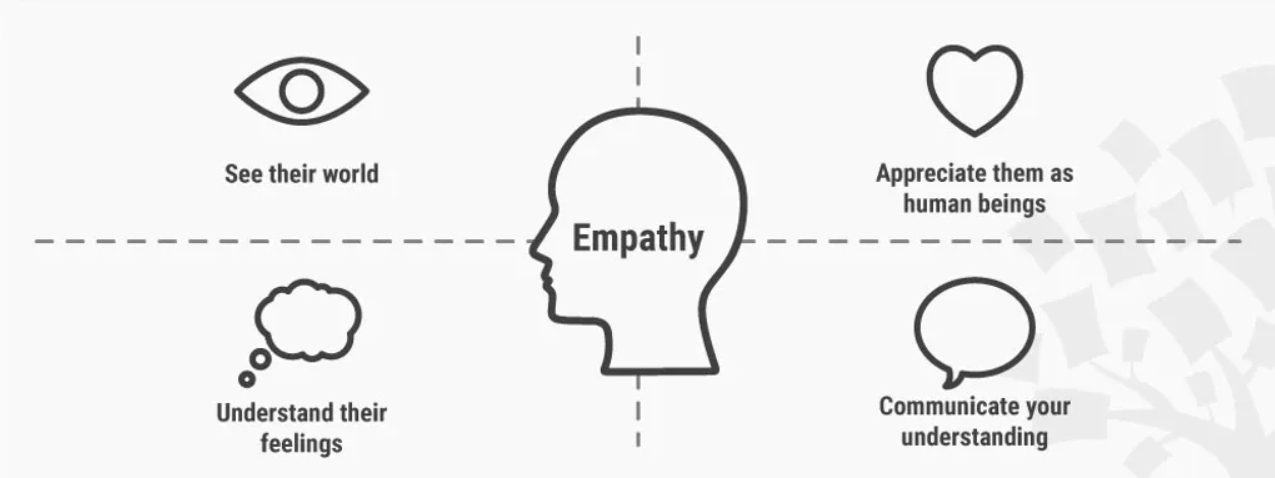Table Of Content

The story symbolizes the struggles we face where oftentimes the most obvious solutions are the ones hardest to come by because of the self-imposed constraints we work within. With this in mind, it may be more correct to say design thinking is not about thinking outside the box, but on its edge, its corner, its flap, and under its bar code—as Clint Runge put it. Design thinking is more than just a process; it opens up an entirely new way to think, and it offers a collection of hands-on methods to help you apply this new mindset.

Ideate stage
The “empathize” stage of the design thinking process involves learning about customers’ challenges. This stage is focused on gaining a deep understanding of users’ needs, emotions, and behaviors in order to develop meaningful solutions. Design thinking is a methodology which provides a solution-based approach to solving problems. When you know how to apply the five stages of design thinking you will be impowered because you can apply the methodology to solve complex problems that occur in our companies, our countries, and across the world. The first stage of design thinking lays the foundation for the rest of the process because it focuses on the needs of the real people using your product. At this stage, you want to get familiar with the people experiencing the problems you’re trying to solve, understanding their point of view, and learning about their user experience.
A conceptual framework of learning experience within a gamified online role-play
Design thinking puts the user front and center, with the Empathize stage dedicated to understanding and discovering user needs. At this stage, your team’s goal is to remove uncertainty around your proposed solutions. This is where you start thinking about them in more detail, including how you’ll bring them to life. Your prototypes should help the team understand if the design or solution will work as it’s intended to. D4VG products can cost more to build, but they can ultimately raise margins by delivering on a clear understanding of a product’s core brand attributes, insights into people’s motivations, and design thinking. User-centered design is great for developing a fantastic product or service.
Why Design Thinking Skills Matter
The main value of design thinking is that it offers a defined process for innovation. While trial and error is a good way to test and experiment what works and what doesn’t, it’s often time-consuming, expensive, and ultimately ineffective. On the other hand, following the concrete steps of design thinking is an efficient way to develop new, innovative solutions. To help you get a solid understanding of the problems you’re solving, you can ask a lot of questions to build empathy with your users. These will invite people to share their experiences and observations to help your team better understand the problem. Then, you can move on to some specific exercises for the empathy stage of the process.
As you can see, design thinking offers us a means to think outside the box and also dig that bit deeper into problem-solving. It helps us carry out the right kind of research, create prototypes and test our products and services to uncover new ways to meet our users’ needs. Design thinking is an iterative process in which you seek to understand your users, challenge assumptions, redefine problems and create innovative solutions which you can prototype and test.
The Design-Thinking method for stimulating knowledge transfer in organisations - Universiteit Leiden
The Design-Thinking method for stimulating knowledge transfer in organisations.
Posted: Tue, 20 Jun 2023 07:00:00 GMT [source]
Desirability: Meet People’s Needs
But to unlock greater potential and to learn how to work as a dynamic problem solver, creative confidence is key. For IDEO founder David Kelley, creative confidence is the belief that everyone is creative, and that creativity isn’t the ability to draw or compose or sculpt, but a way of understanding the world. At IDEO, we’re often asked to share what we know about design thinking. Here, we introduce design thinking, how it came to be, how it is being used, and steps and tools for mastering it. You’ll find our particular take on design thinking, as well as the perspectives of others. Everything on this site is free for you to use and share with proper attribution.
Exploring the rise, and evolution, of analogue design techniques - It's Nice That
Exploring the rise, and evolution, of analogue design techniques.
Posted: Mon, 08 Jan 2024 08:00:00 GMT [source]
This will prove beneficial not only to you and your design practice but also to others—your future clients, maybe. As you walk around the world, you should try to look for the design stories that are all around you. Say to yourself “that’s an example of great design” or “that's an example of really bad design” and try to figure out the reasons why. When the solution was tested, the truck was able to drive free with ease, having suffered only the damage caused by its initial attempt to pass underneath the bridge.
This is where the designer looks into previous information such as previous projects, competitive clients and different types of data already there. This type of research is helpful early as it helps designers build a vision of the situation and determine the type of research needed. The disadvantage of using secondary research alone is that every design challenge has its unique situation. So, the secondary data won’t sufficiently provide you with the accurate information needed to solve the design challenge. As the secondary data are essential to understand the problem at hand, we need to decide if the issue needs to have primary data or not. In the fourth stage of the Design Thinking process, you’ll turn your ideas from stage three into prototypes.
Despite this constraint, she required a dental consultation to receive advice for initial self-care, as her symptoms significantly impacted her daily life. Furthermore, she was designated to encounter difficulties with the technological use of the teledentistry platform. Frog make it clear these stages form a non-linear process, and you might have to revisit stages multiple times during a project—particularly the clarification stage.
It’s essential, however, to anchor abstract ideas in concrete thinking to ensure the solution is valid and useful. Design thinking is different from other innovation and ideation processes in that it’s solution-based and user-centric rather than problem-based. This means it focuses on the solution to a problem instead of the problem itself. IDEO design consultancy is formed by combining three industrial design companies. They are one of the first design companies to showcase their design process, based on design methods and design thinking.
Continue to actively avoid assumptions and keep the user at the forefront of your mind during ideation sessions. Once the problem statement or question has been solidified—not finalized—the next step is ideation. You can use a tool such as systematic inventive thinking (SIT) in this stage, which is useful for creating an innovative process that can be replicated in the future. For example, if a team is struggling with transitioning to remote work, the design thinking methodology encourages them to consider how to increase employee engagement rather than focus on the problem (decreasing productivity). You’ll get the best outcomes if you bring insights, perspectives, and expertise from multiple stakeholders. That includes at the Prototype and Test stages, as everyone will have ideas to contribute to help you bring solutions to life.

No comments:
Post a Comment